The freelance economy is booming. In 2025, more businesses than ever rely on freelance platforms to scale creative work, marketing projects, and specialized services without hiring full-time staff. Fiverr, once the pioneer of the gig economy’s fast and affordable freelance model, helped shape this space. But as demands grow more complex, many companies are finding that Fiverr no longer meets their needs.
Whether you’re a marketer who needs a trusted partner for ongoing creative support, a startup aiming to scale without expanding headcount, or an agency looking for vetted talent and seamless project management, the right freelance platform can make all the difference.
This guide dives into the top Fiverr alternatives in 2025. Each of these freelancing sites offers vetted contractors, strategic project management, and flexible hiring options designed for today’s business challenges. Read on to find the best freelance websites for your next big project.
Why Consider Fiverr Alternatives?
Fiverr changed how businesses approach creative work, offering fast, affordable, and accessible freelance services at the click of a button. It’s a great solution for one-off needs like a quick logo, voiceover, or piece of copy. But as projects become more strategic, brand-sensitive, or recurring, Fiverr’s limitations become clear.
Because Fiverr operates as an open marketplace, quality can be inconsistent. There’s no rigorous vetting process, so finding someone with the right skills often takes a lot of trial and error. That means time spent rewriting briefs, managing revisions, and chasing consistency, especially if your project spans multiple deliverables or requires a deep understanding of your brand.
Unlike dedicated creative platforms, Fiverr also lacks structured project management. You don’t get a team that’s up to speed on your brand or a project manager to help streamline creative delivery. Everything falls on you, from briefing and revision management to maintaining creative direction and quality standards across freelancers.
When Fiverr Falls Short
Fiverr’s model works fine when you just need something fast and inexpensive. Still, if you need ongoing content, higher calibre design, or brand-aligned creative, you’ll likely benefit from a more structured setup. Ideally, this setup includes dedicated team members who ramp up quickly, deliver reliably, and move projects forward with minimal back-and-forth.
That’s where alternatives like Teamtown come in. Instead of acting as a marketplace, Teamtown functions like an extension of your internal team. You get a dedicated project manager, a creative team familiar with your brand, and work that’s delivered faster, with better alignment and far less operational overhead.
You might want to explore Fiverr alternatives if you:
- Need consistent, high-quality output across multiple projects
- Want to reduce the time you spend managing freelancers
- Require vetted talent with industry-specific experience
- Are building a brand identity and need creative continuity
- Prefer more structure, oversight, and strategic support
In these scenarios, Fiverr’s speed and price point may not be enough. A platform built for quality, consistency, and collaboration will save you time and deliver better results.
Top Fiverr Alternatives in 2025
Here are 12 of the best freelance platforms and Fiverr competitors for 2025, each with unique strengths depending on your budget, project scope, and support needs.
1. Teamtown
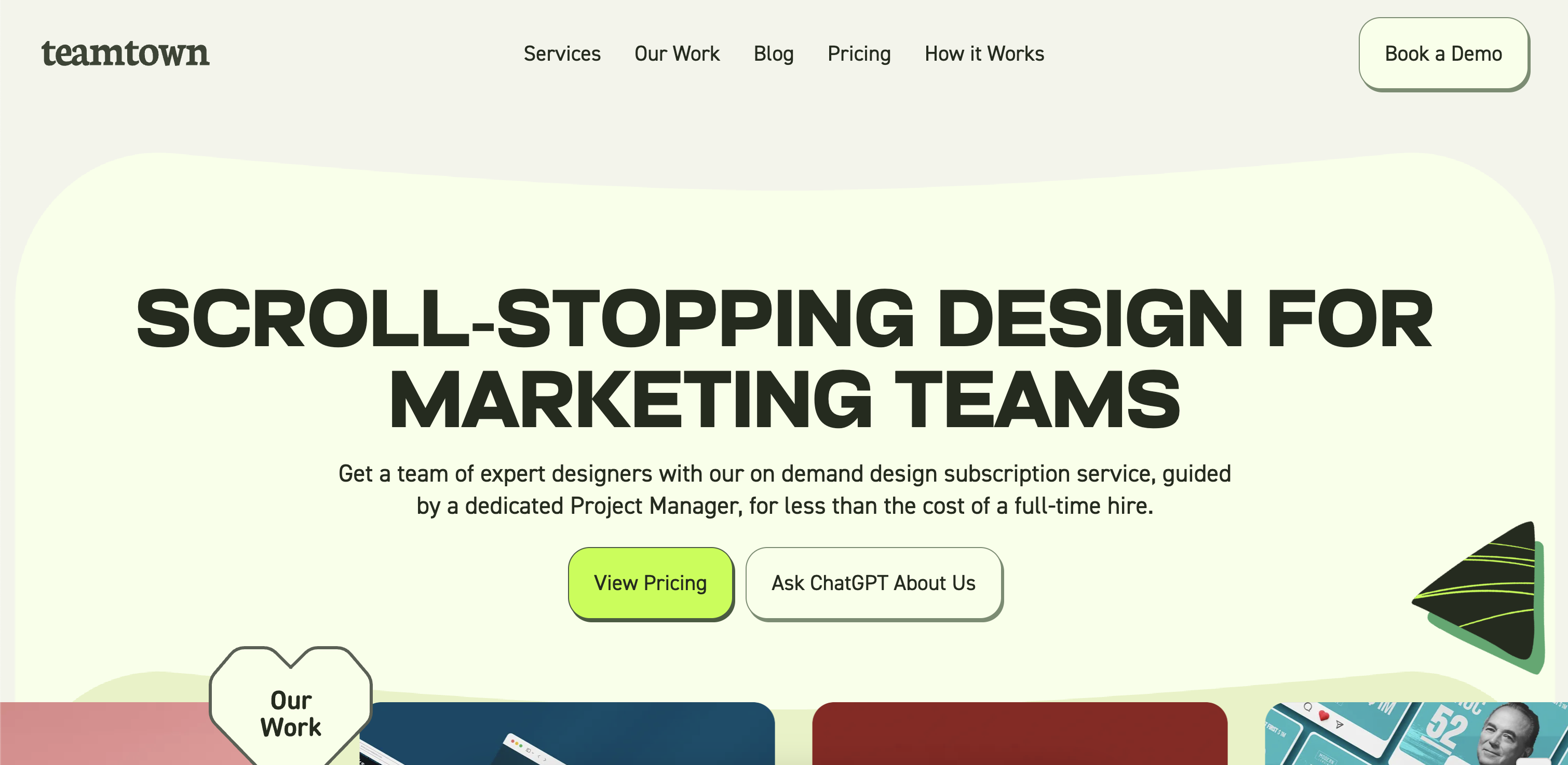
Best for: Creative-as-a-Service (CaaS) and Managed Design Pods
CaaS agency Teamtown offers a subscription-based model, where vetted creative teams work as an extension of your marketing department. Rather than juggling multiple freelancers, you get a dedicated pod of designers managed under one roof.
This leads to strategic oversight, consistent brand alignment, and fast turnaround without the overhead of in-house hiring. What’s more, the platform’s visual dashboard lets you submit and track requests seamlessly.
Why businesses love it: You get agency-quality creative output for one monthly flat fee, with freelancer-level flexibility. It’s ideal for startups, agencies, and brands needing high volume, ongoing creative support.
Pros:
- Dedicated team and project manager
- Fast turnaround times
- Subscription pricing with no hidden fees
- Deep brand familiarity over time
Cons:
- Not a fit for one-off tasks
2. Upwork
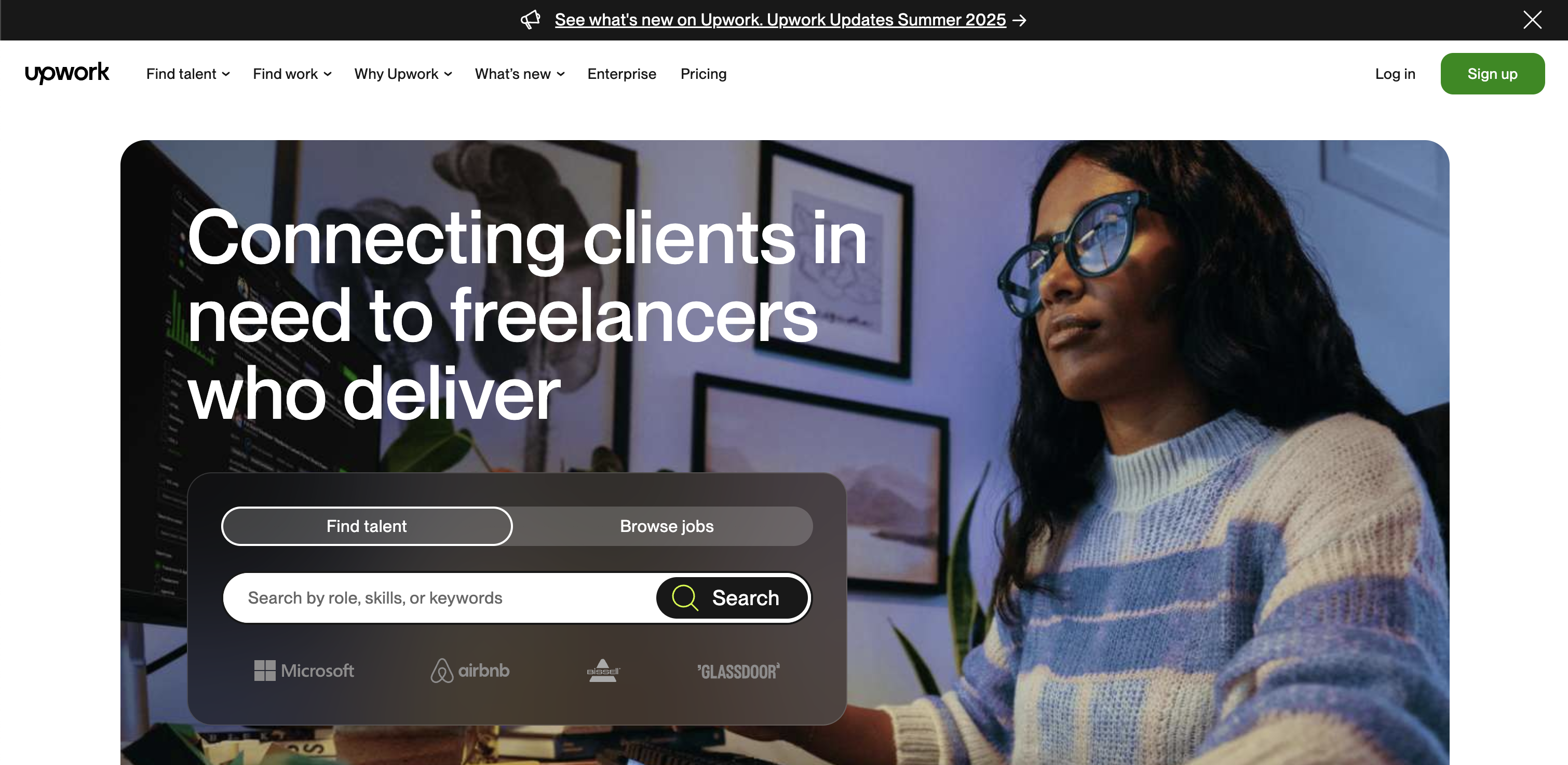
Best for: Diverse Talent across Roles and Industries
Upwork is one of the largest global freelance marketplaces. It offers access to millions of freelancers skilled in design, development, writing, marketing, and more. You can post jobs, invite proposals, and manage contracts and time tracking, all in one place.
Its strength lies in choice and flexibility, whether you want hourly work, fixed-price projects, or milestones. However, the wide range of talent means vetting is crucial, and quality can vary.
Ideal for: Companies with internal capacity to review candidates and manage freelancers.
Pros:
- Huge global talent pool
- Integrated time tracking and contracts
- Budget-friendly options
Cons:
- Quality varies widely
- Management and vetting fall on the client
3. 99designs
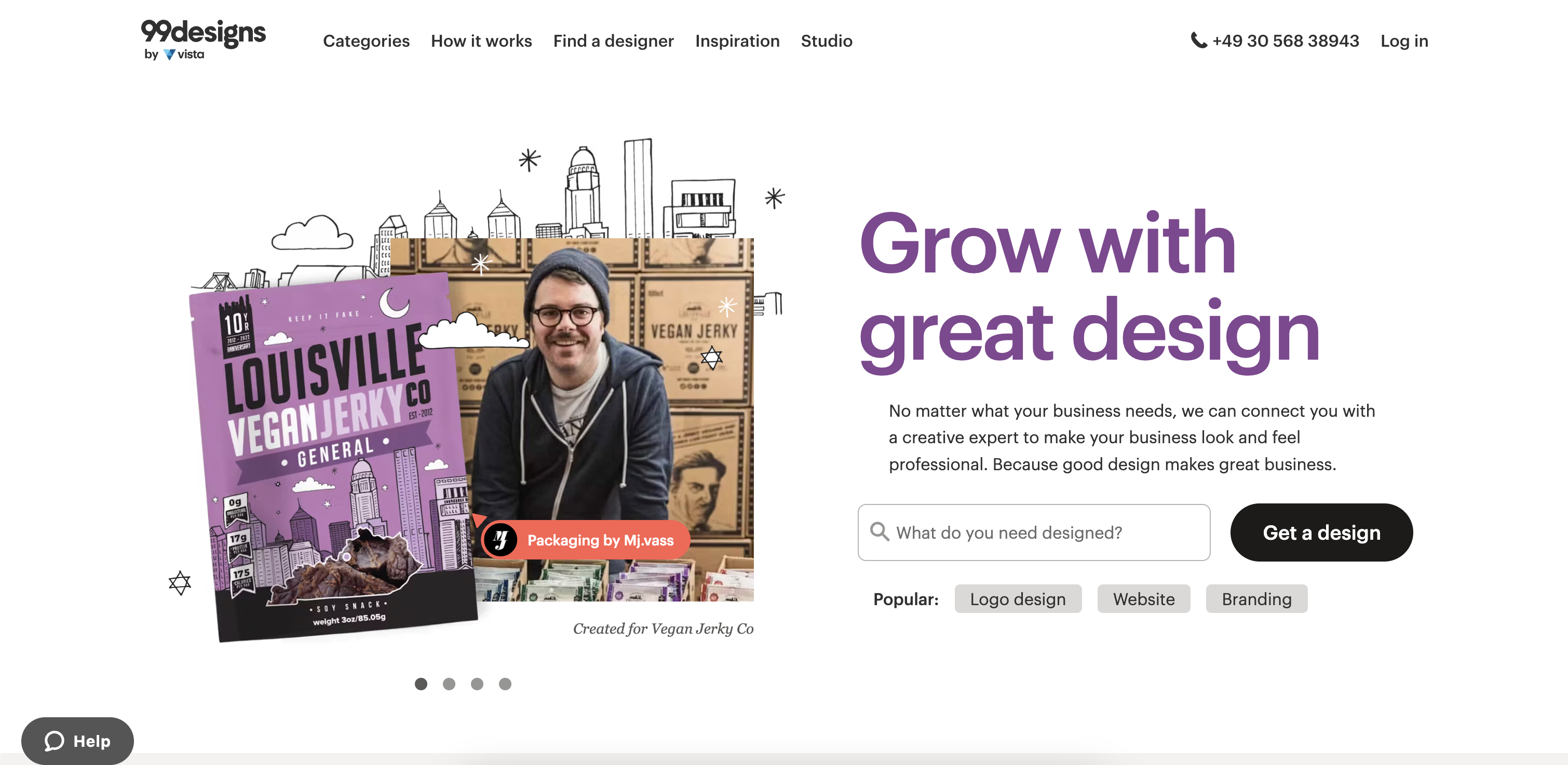
Best for: Brand Design and Creative Contests
99designs lets you run design contests where multiple creatives submit concepts, giving you options before you pick a winner. Alternatively, you can hire designers directly.
The platform is great for rapid idea generation and visual brand identity work, plus 99designs offers a strong creative community. However, it lacks the structure for ongoing creative partnerships.
Best use case: One-time branding projects, packaging design, or marketing collateral.
Pros:
- Get multiple design concepts fast
- Good for early-stage visual identity work
Cons:
- Doesn’t scale for long-term creative needs
- Less strategic oversight
4. Toptal
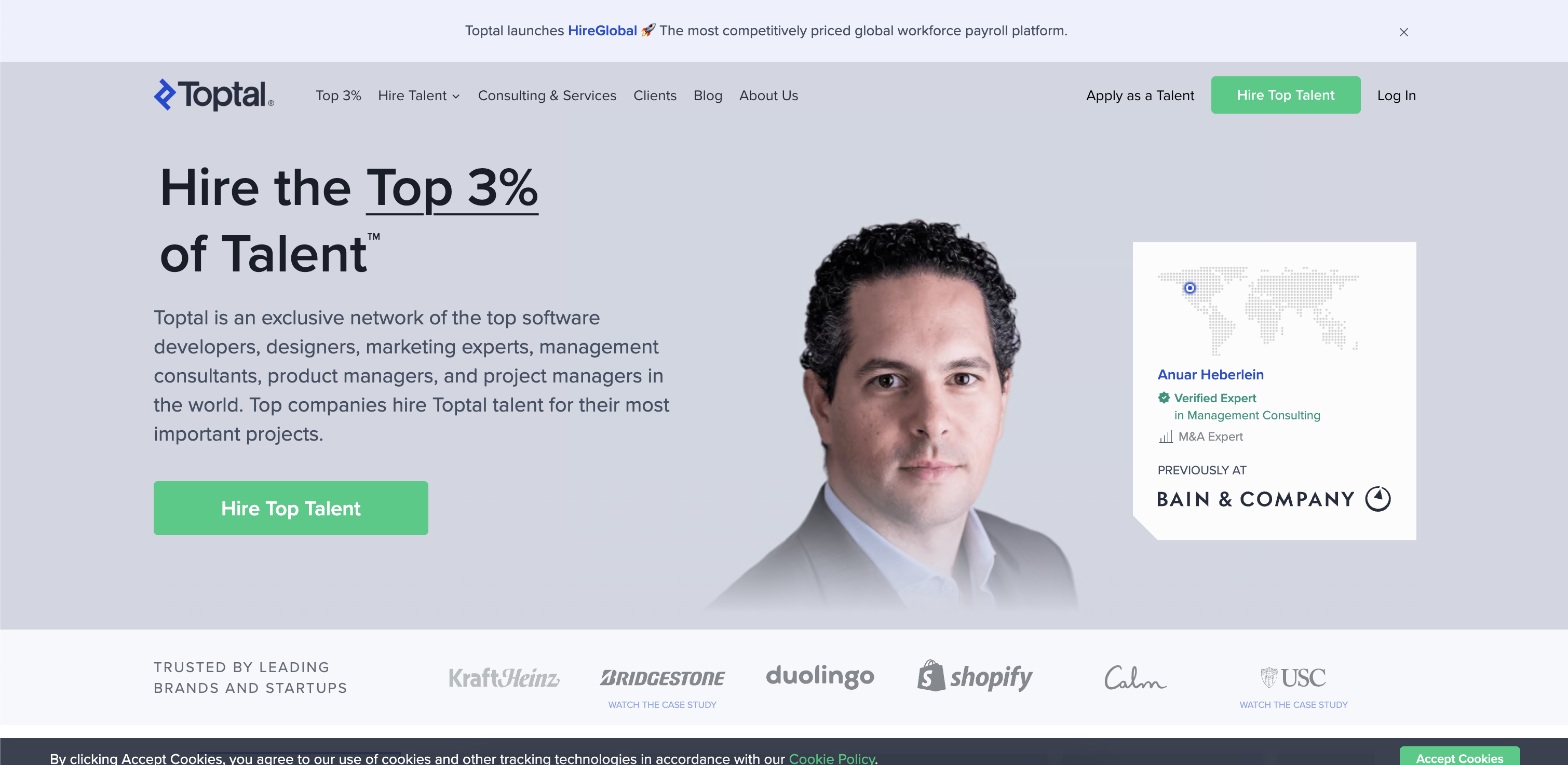
Best for: Elite, rigorously vetted freelancers in tech, design, and finance
Toptal connects companies with the top 3% of freelancers globally. The vetting process is rigorous, and the platform is ideal for high-stakes work that demands exceptional skill and precision.
Toptal is especially valuable for startups and enterprises working on mission-critical projects. It’s more costly than other platforms, but quality is virtually guaranteed.
Drawback: Premium pricing and longer onboarding.
Pros:
- Highly curated talent
- Strong support for matching
- Excellent quality assurance
Cons:
- Premium pricing
- Not ideal for small or one-off tasks
5. PeoplePerHour
Best for: Startups and Budget-Conscious Brands
PeoplePerHour offers flexible hiring for digital projects—hourly or fixed-price—and is especially popular in Europe. It’s well-suited to startups looking for basic design, writing, or development help.
The UI is simple, and the job-posting process is quick, but you’ll need to review applicants carefully to ensure a good fit.
Pros:
- Transparent pricing
- Simple platform interface
Cons:
- Vetting is limited
- Less support for project management
6. Freelancer.com
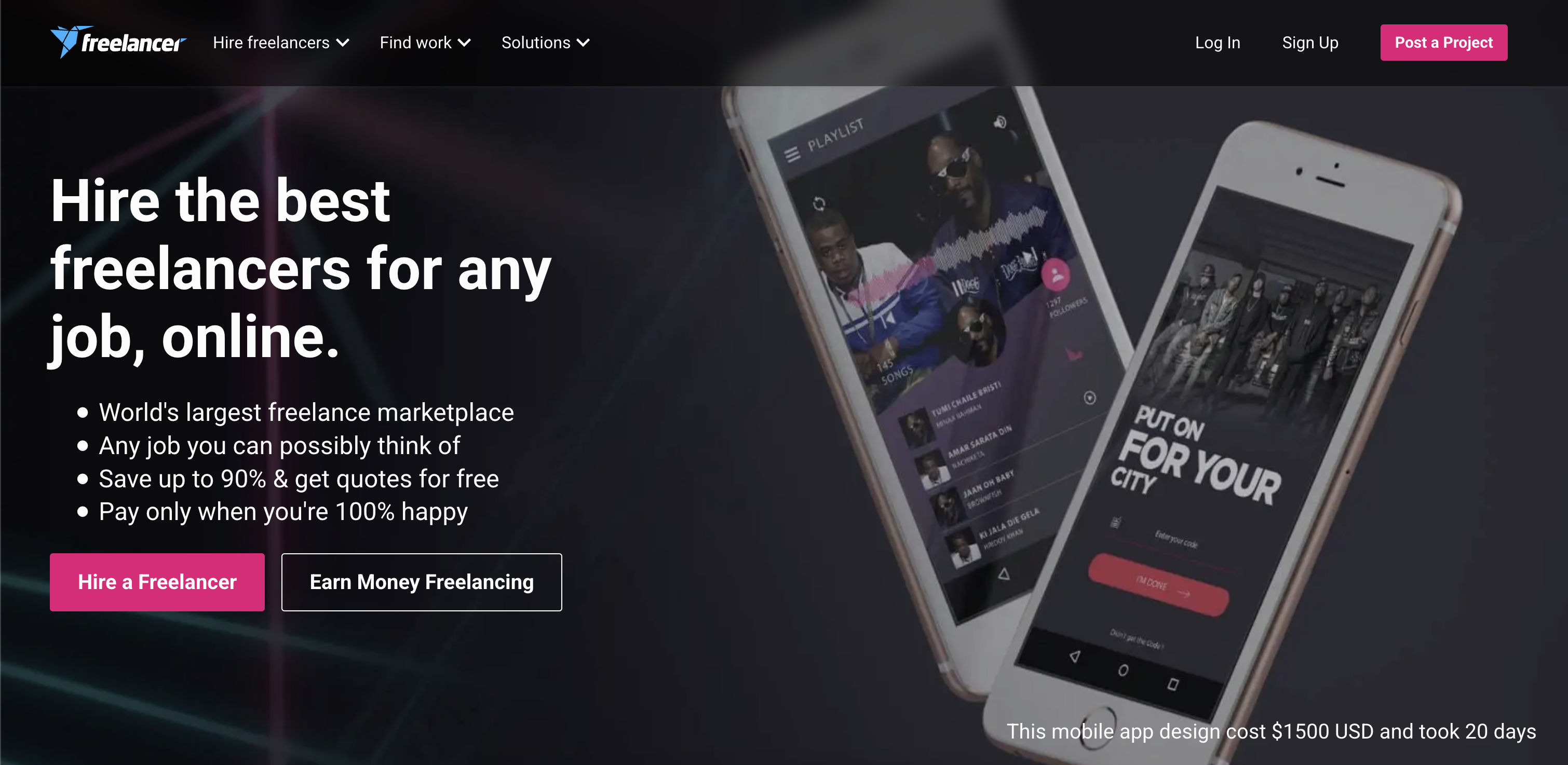
Best for: Flexible Budgets and Project Bidding
Freelancer.com’s bidding model lets freelancers compete to win your project, often reducing costs. You can run contests or hire directly.
This can lead to cost savings, but quality can be hit or miss. The platform feels dated compared to modern competitors and offers limited tools for managing long-term relationships.
Pros:
- Bidding can lower costs
- Wide range of categories
Cons:
- Outdated UI
- Limited freelancer oversight
7. Guru
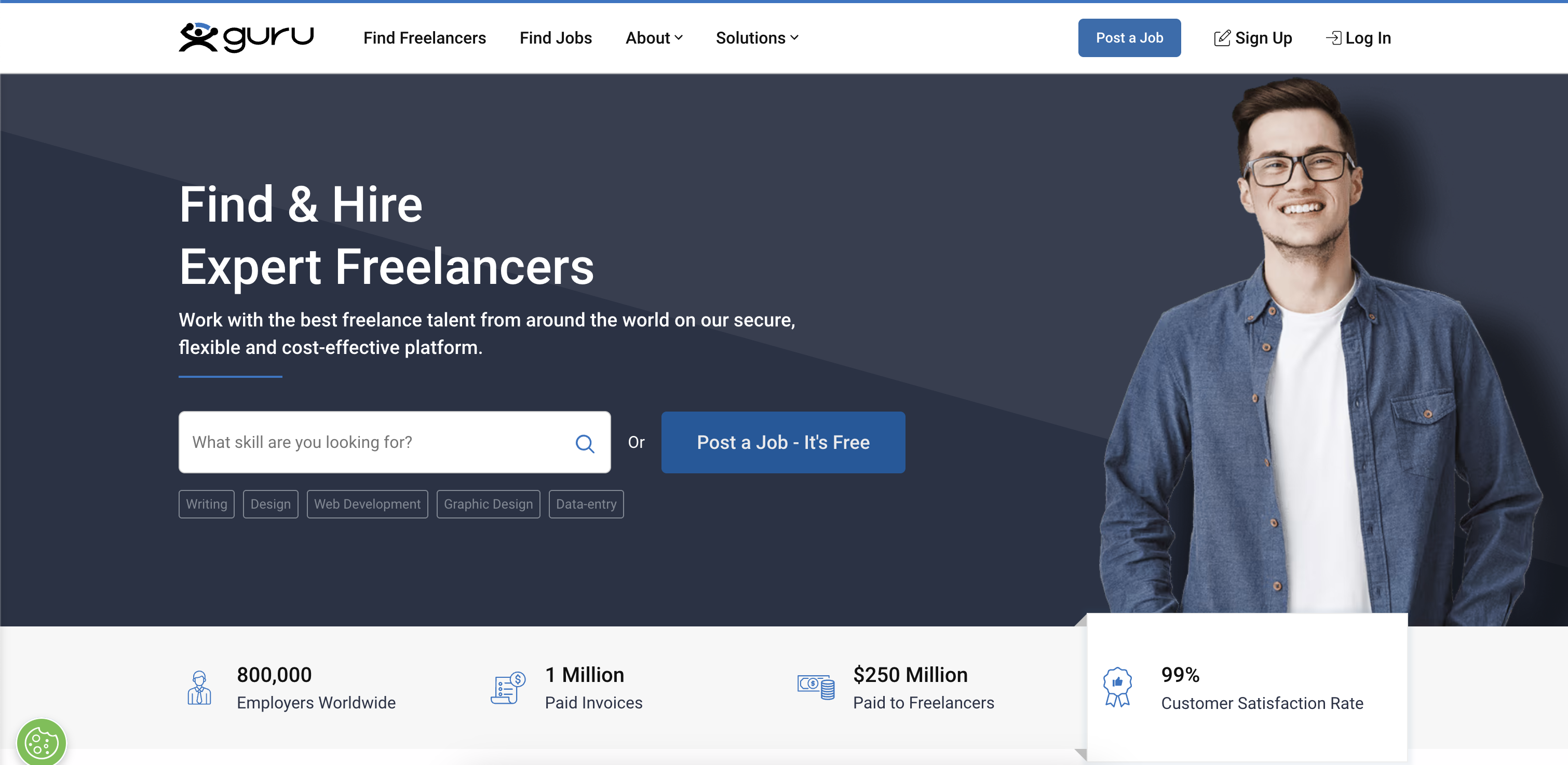
Best for: Long-term Freelance Relationships
Guru emphasizes long-term work with contracts, milestones, and dedicated workspaces. It’s a practical choice for companies needing steady support rather than one-off hires.
However, the platform’s user interface feels dated, and some niches have fewer freelancers, meaning less choice for you, depending on your field.
Pros:
- Strong support for contracts and recurring work
- Milestone-based payments
Cons:
- Dated interface
- Fewer freelancers in specialized niches
8. Truelancer
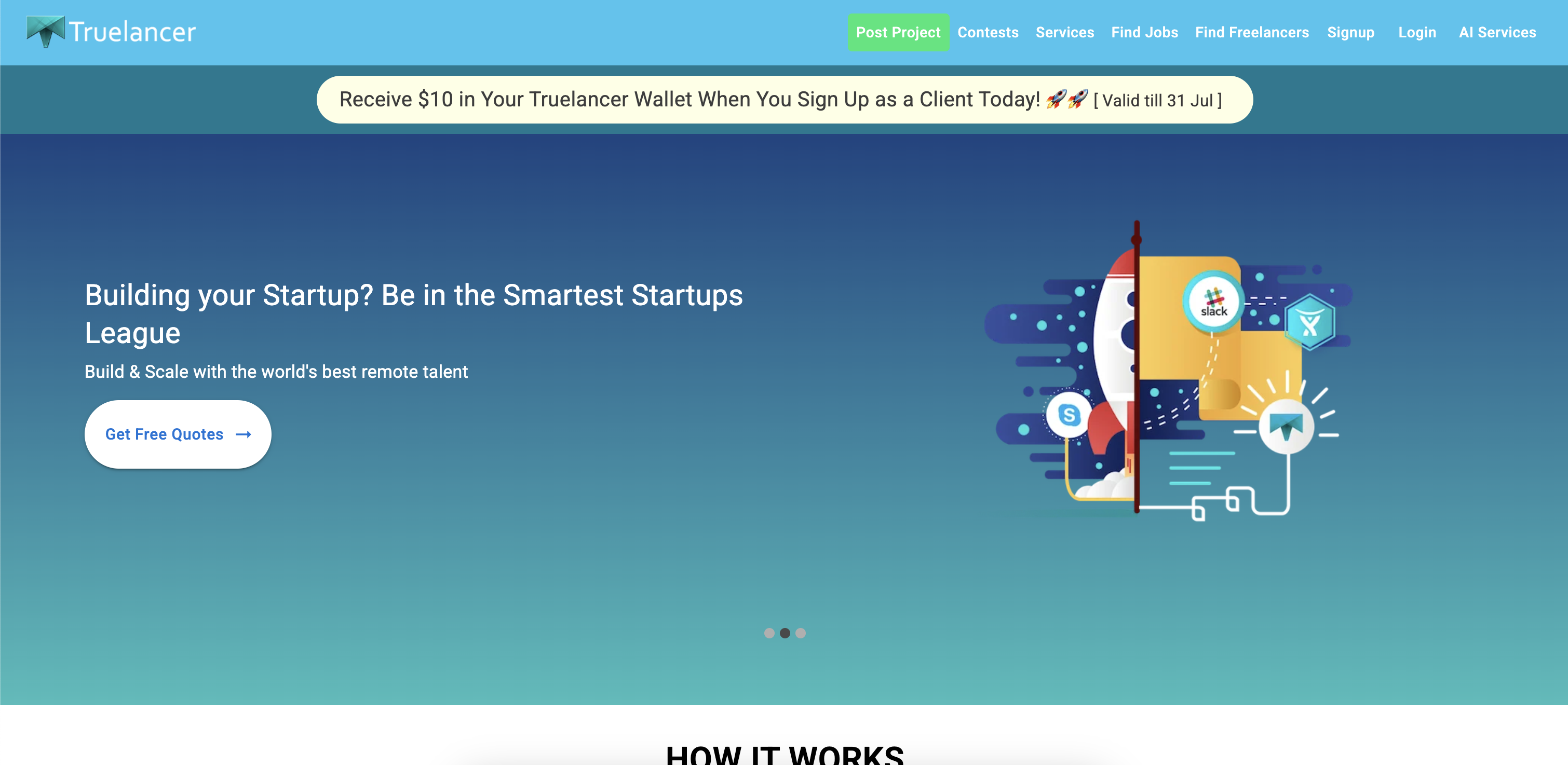
Best for: Scaling Tech and Administrative Tasks affordably
Truelancer serves primarily India and Southeast Asia with affordable digital services. It’s a budget-friendly choice for basic tech or creative tasks.
Yet, quality varies, and it may not meet the standards of North American or European businesses. It's best for simple, low-risk tasks where speed and price are the priority.
Pros:
- Very cost-effective
- Ideal for simple, repetitive tasks
Cons:
- Limited vetting
- Not suited for brand-forward work
9. DesignCrowd
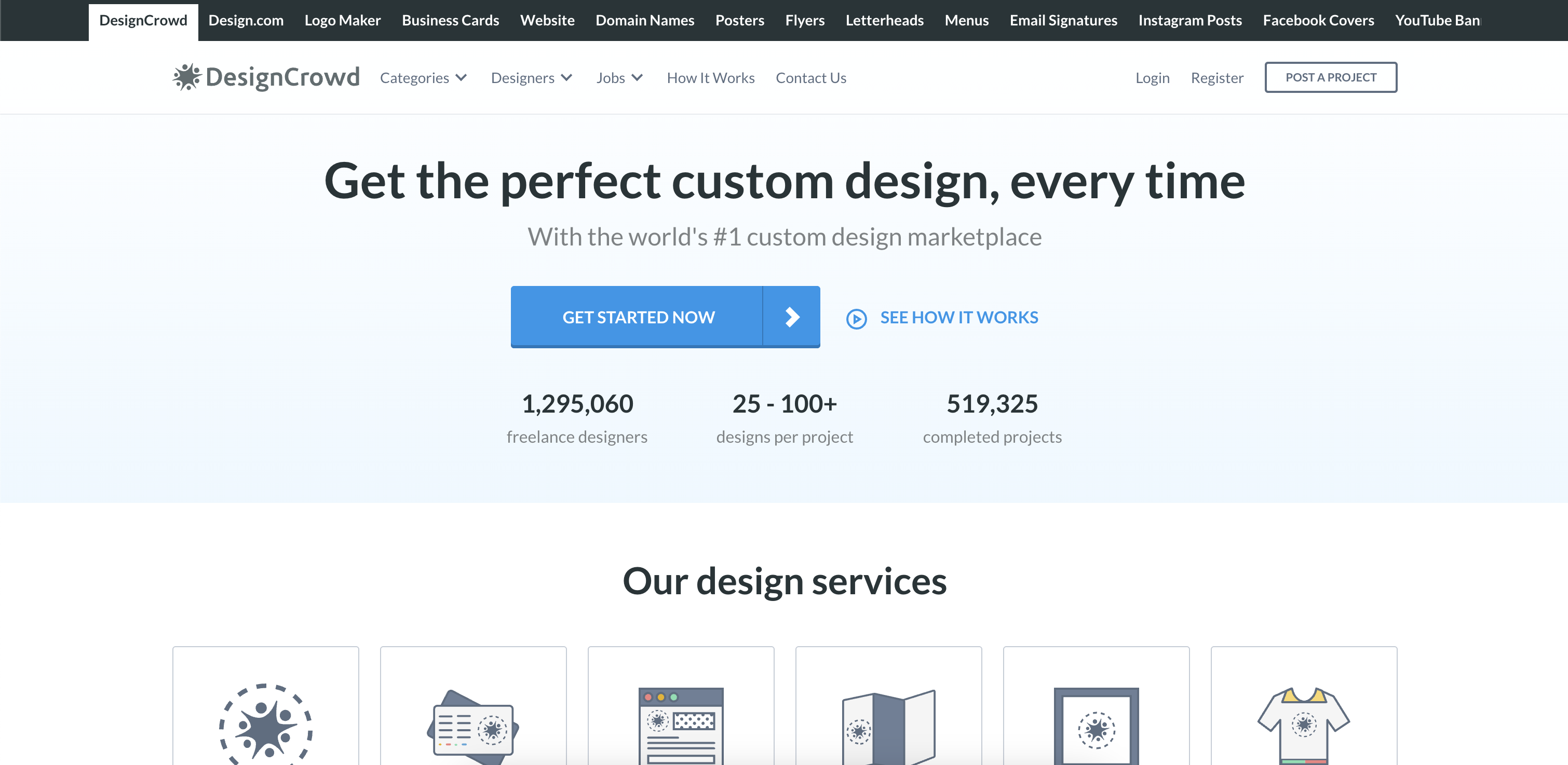
Best for: Crowdsourced Visual Concepts
DesignCrowd is similar to 99designs, letting you crowdsource multiple visual concepts. It’s quick and cost-effective for generating ideas.
That said, it’s not built for long-term relationships or brand consistency. It’s great for variety, but less so for strategy or ongoing work.
Pros:
- Broad range of ideas
- Fast turnaround
Cons:
- Limited brand consistency
- No continuity for complex projects
10. TaskRabbit
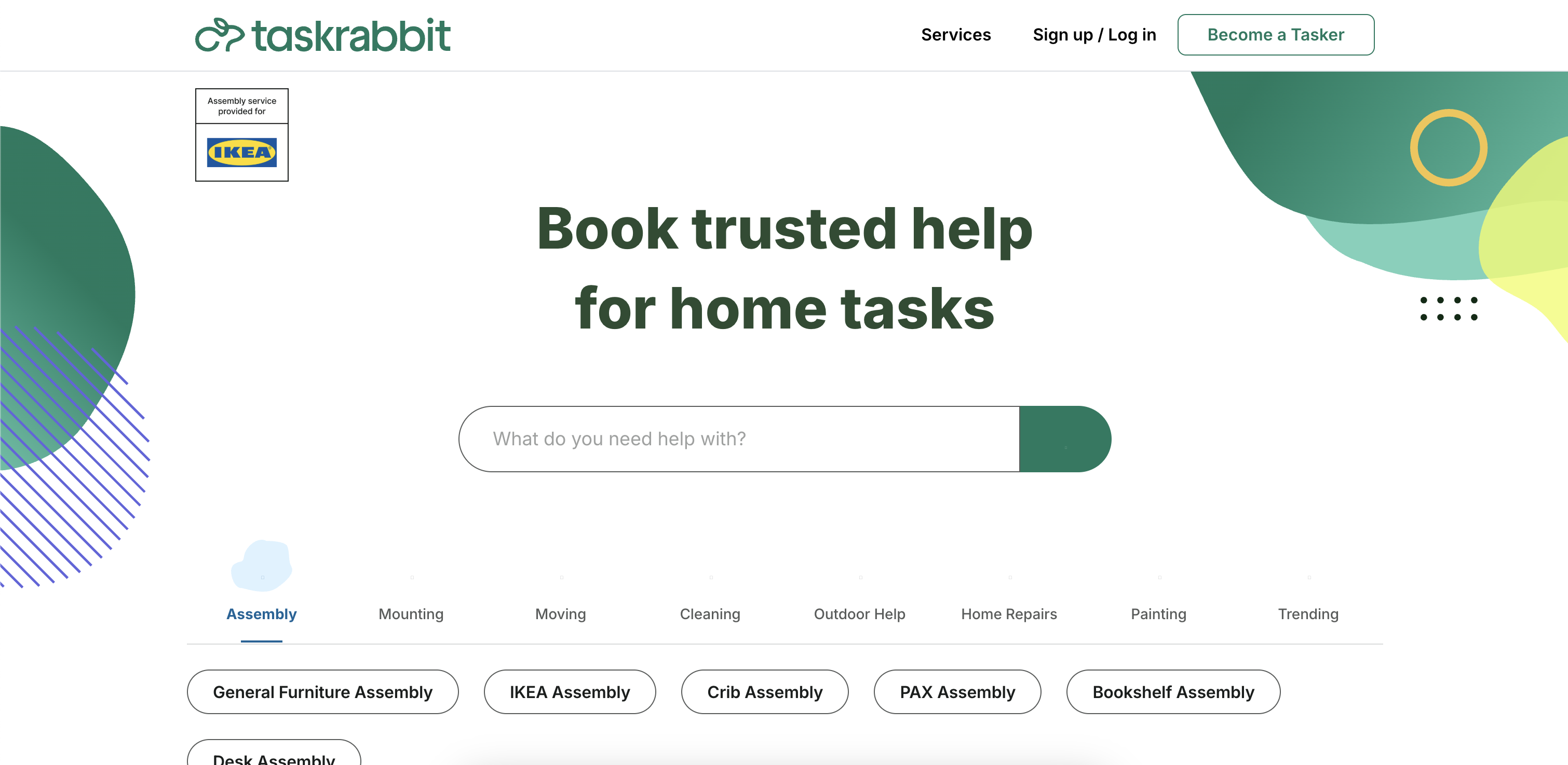
Best for: Local, In-Person Freelance Help
TaskRabbit connects you with local freelancers for physical tasks like photography, event setup, or installations.
While it’s ideal for on-the-ground help, it’s location-specific and not intended for remote digital work, like creative services. Because of this, its relevance for most brand or marketing work is limited. That said, it can be a great way to discover creative professionals in your community for one-off projects or local collaborations.
Pros:
- Great for on-site support
- Quick and easy to connect with creatives in your community
Cons:
- Location-specific
- Not suitable for creative strategy or remote work
11. SolidGigs
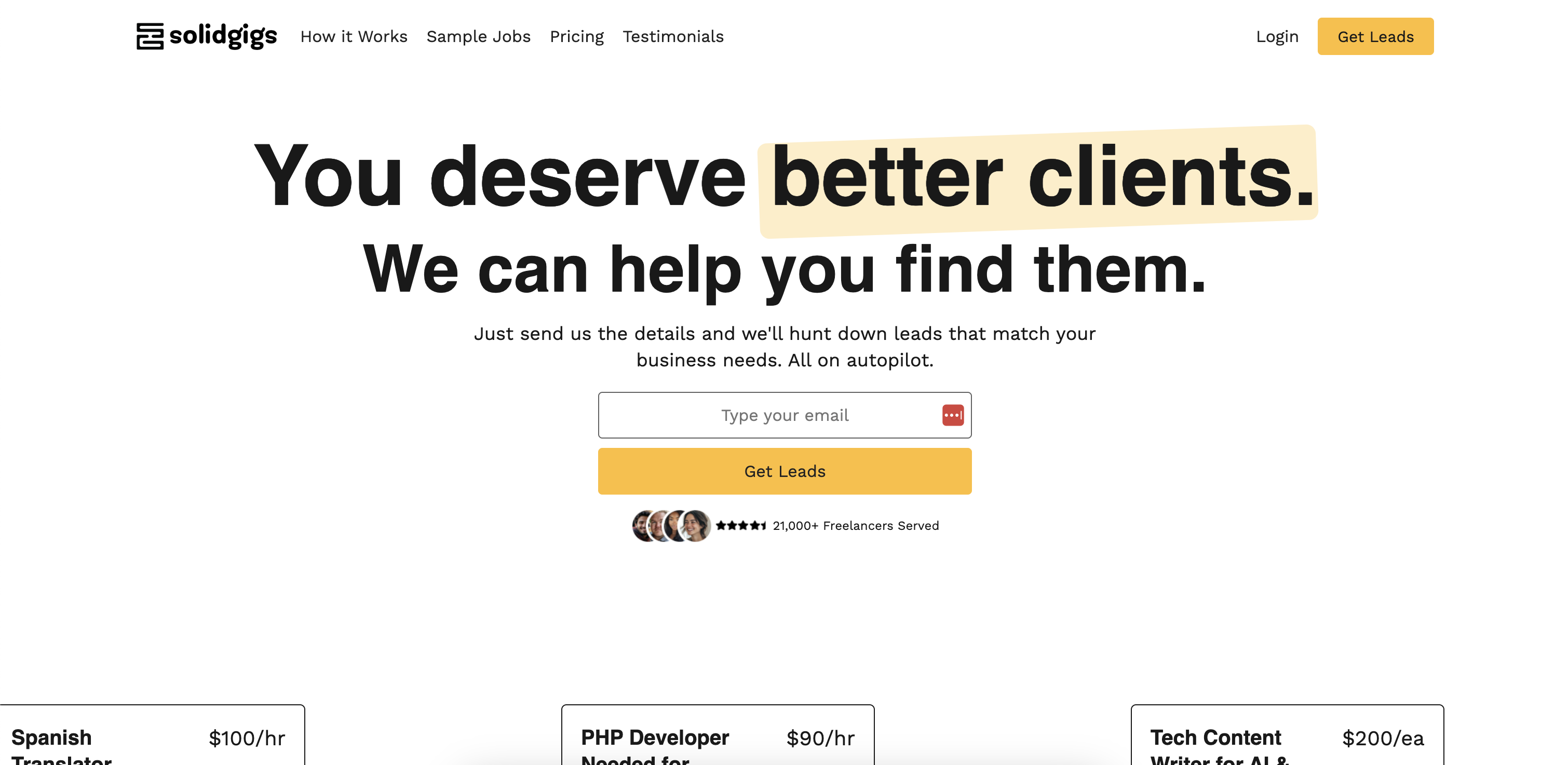
Best for: Curated Freelance Talent Discovery
SolidGigs doesn’t host freelancers directly but finds high-quality leads for you, saving time on outsourcing.
It’s ideal if you want fewer, better candidates, though the platform’s freelancer pool is smaller, and it’s best for ongoing rather than one-off work.
Pros:
- Time-saving lead generation
- High-quality opportunities
Cons:
- Smaller talent pool
- Requires outside vetting
12. MarketerHire

Best for: On-Demand Marketing Experts
MarketerHire quickly connects you with vetted marketing experts in roles like growth, paid media, or email strategy. It’s efficient, flexible, and quality-driven.
However, it’s more expensive than general platforms and limited to marketing roles, making it great for campaigns, but not as a full-service solution.
Pros:
- Vetted, specialized marketers
- Fast onboarding
Cons:
- Narrow talent focus
- Higher cost than general platforms
Choosing the Right Platform for Your Needs
With so many freelance platforms and creative services out there, how do you decide which one is the right fit for your business? To help you compare, we’ve broken down key features across each Fiverr alternative, looking at everything from pricing and project types to talent quality and scalability.
Whether you need a one-off logo, a dedicated creative team, or specialized marketing talent, this quick table will help you identify the platform that best aligns with your goals.
When deciding on your next freelance platform, ask:
How complex is my project?
Simple tasks like logo resizing or minor copy edits can be handled by most freelancers. But for brand-level design, multi-asset campaigns, or projects requiring cross-functional collaboration, you'll want a more experienced, integrated team.
Do I need one-time or ongoing support?
If you're just looking for help with a single brochure or quick animation, platforms like Fiverr or Upwork can do the trick. However, if you're producing creative assets regularly, think weekly social content, ads, or landing pages, a subscription-based service like Teamtown offers better continuity and efficiency.
What’s my management capacity?
Do you or your team have time to write briefs, chase deadlines, give rounds of feedback, and manage creative reviews? If not, a managed service with a project manager baked in will save you serious time and mental energy.
What’s my budget?
Freelancer rates vary widely, from $5 gigs to $150-per-hour designers. Be realistic about what you can invest per project or per month, and remember: cheap work often requires costly revisions. Consider the total value, not just the sticker price.
What sort of talent level am I looking for?
Are you after entry-level support for production tasks, or do you need senior-level creatives who can understand and elevate your brand? The more strategic the role, the more important it is to hire for expertise, not just availability.
Maximizing Success with Freelance Platforms
No matter which platform you choose, success depends on how you manage the relationship. Here are four quick tips for getting the most out of your next freelance platform.
1. Write a Killer Creative Brief
Clarity attracts better talent, so be specific about what you need. Include deliverables, timelines, goals, brand guidelines, and sample references. Define the tone, audience, key messages, and any non-negotiables.
A strong brief sets expectations, minimizes revisions, and gets everyone aligned from day one.
2. Align on Expectations Early
Set up a kickoff call if possible. Discuss project scope, deadlines, communication preferences, and the tools you’ll use, whether that’s Slack, Trello, Figma, or Google Docs. Align on milestones, check-ins, and feedback cycles.
If approvals need to go through multiple stakeholders, flag that early so the freelancer can plan accordingly.
3. Give Feedback That Helps
Freelancers aren’t mind readers. Be timely, direct, and constructive with feedback. Instead of vague comments like “this doesn’t work,” explain why something is off and suggest alternatives.
If something’s great, say so. Positive reinforcement leads to stronger results and a more motivated partner.
4. Invest in Relationships
When you find great talent, treat them like an extension of your team. Long-term freelancers work faster, understand your brand better, and require less oversight. Share internal updates or marketing plans that might shape the work.
Check in regularly, pay on time, and acknowledge great contributions. Relationships are the difference between one-off output and ongoing creative momentum.
Why Teamtown Works Better for Marketing Teams
For marketing teams that want to scale creative output with consistent, high-quality work, Teamtown is the smarter alternative to Fiverr. Its subscription model, dedicated design pods, and built-in project management fill the gap between juggling freelancers and building an in-house team.
Unlike traditional freelance platforms, where you're left managing timelines, briefs, and quality control, Teamtown handles the operational side for you. That means fewer bottlenecks, more brand consistency, and faster turnaround times.
You save time, reduce management headaches, and get high-converting assets that actually move the needle, whether you're launching a campaign, refreshing a brand, or scaling content production across channels.
The result? Less wrangling, more results.
Ready to see how Teamtown can elevate your brand? Book a free design call today.
FAQs
What is the #1 freelance website?
It really depends on your needs. For vetted creative teams that work as an extension of your brand, Teamtown is a standout. You get consistent quality, a dedicated project manager, and designers who already understand your brand voice.
If you’re looking to cast a wider net and are comfortable managing freelancers directly, Upwork dominates in terms of volume and variety. It's ideal for companies that have time to vet applicants and want more control over the process.
Is Upwork or Fiverr better?
That depends on the type of work and how involved you want to be. Upwork offers greater control, longer-term collaboration features, and detailed freelancer profiles. It’s better for ongoing or complex projects where vetting and communication matter.
Fiverr, on the other hand, is better for quick-turnaround tasks. You browse pre-packaged services, so it’s faster, but often more transactional, with limited customization.
What is the difference between Fiverr and TaskRabbit?
Fiverr is for digital freelance services, think logo design, blog writing, or podcast editing. Everything is remote.
TaskRabbit connects you with local service providers for in-person tasks like assembling furniture, handing out flyers at an event, or onsite photography. It’s more commonly used for hiring a local gig worker than a creative freelancer.






